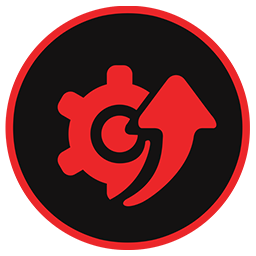Enterprises: Now's the time to join Windows 10 Insider

With more than 10 million participants, Microsoft’s consumer Insider program has successfully engaged with fans and built a global test platform to learn how people really use computers. But there’s one big flaw in the program: It’s been for consumers, not for enterprises—until now.
There’s likely a good reason for the Insider program’s historic consumer focus: How can a business work with untested and untried software that’s not known to have bugs, including many that aren’t even identified at this stage? Enterprise IT is all about minimizing risk, not bringing new risk into the organization, so the consumer focus of the Insider program makes practical sense.
But enterprises are big business for Microsoft, and their needs are different than those of consumers. Enterprises use different software and hardware, and they run PCs in a very different manner. Where home users have PCs that at most access workplace joins for a minimal level of management, PCs in corporate fleets are controlled by Active Directory and System Center, locked down and managed to keep valuable data safe. Then there are applications: At home they’re usually off-the-shelf software, while in businesses there’s a mix of purchased and custom code.
Taking code as it comes is risky, even as new development models and tools have reduced the kinds of Windows Update breakages that my InfoWorld colleague Woody Leonhard regularly chronicles. IT teams have long memories, and given past breakages it’s not surprising that many organizations lag even the current branch for business where they’ve begun Windows 10 migrations.
What’s needed is a way of getting the latest enterprise builds in the hands of IT departments so that they can test them, yet not disrupt their day-to-day operations with unsanctioned consumer releases.
To do that, IT needs the ability to select appropriate people to be on a different release ring from the rest of the organization. Perhaps they’re members of the IT team, who are best able to identify issues and report them to Microsoft. Perhaps they’re a cadre of users chosen to try out new tools across the company, who have had additional training and a list of features they’re tasked to explore in detail, along with tools to capture internal evaluations—as well as a quick path back to a stable corporate release if a build appears particularly unstable.
Although that is all possible with the consumer Insider program, it’s only possible with Windows 10 Home and Windows 10 Pro. Without an Enterprise Edition Insider release, you can’t test key features in advance of a new Current Branch for Business release. Most enterprises use the Enterprise Edition, so that version needs to be available in the Insider program.
Windows Insider for enterprises is here
With the launch of its new Windows Insider Program for Business, Microsoft is beginning to address this gap. Users with Azure Active Directory credentials can use them instead of a Microsoft account to register for the Insider program, and they will get the beta (development) builds of Windows 10 Enterprise rather than the consumer Home or Pro versions.
Microsoft already offers a set of group policy objects (GPOs) to control whether users get access to the consumer Insider program, and these same Active Directory controls will work with the Business version of the program. That does mean you’ll need to run a hybrid Active Directory infrastructure, so the same Azure Active Directory accounts that sign up for the newest builds have Active Directory permissions for the appropriate Insider rings. You can also opt for device management tools like Intune to provision the same policies.
In practice, a default GPO will help ensure users don’t install Insider builds on corporate hardware—essentially, unlocking access to Insider builds for specific users and instructing them to work with the Insider Program for Business rather than the consumer services.
You can also test new Office 365 betas
Trying out new versions of Office is a lot easier if you’re running Office 365. As it does for Windows 10, Microsoft uses a staged set of beta (preview) releases. If your organization works with the current channel of Office applications, you can access the Office 365 admin portal to place groups of users into the preview program. If you assign them the Standard release model, users get updates when they’re released across all of Office 365. If you assign them the First Release model, they get both cloud and desktop features more quickly, as they come.
Choosing a release cycle is easy. In your organization profile, edit your release preferences. If you want all your users to be on First Release, choose it as an option for everyone. But if you prefer to test with a smaller group, you can search for and add employees one at a time, which works well for small groups, or you can import text files with lists of email addresses, which is better suited for large groups.
Consumer Office 365 users have access to an even more rapid set of updates, with the Office Insider program and its Fast builds. These come out on an almost weekly schedule to let you try out new features, like the recently released Editor pane in Word that brings together spell- and grammar-checking.
If you want the same cadence for test users on your enterprise Office 365 deployment, go with the Office Deployment Tool to put testers on the Insider Fast level. Download and install the latest Office Deployment Tool release and edit its configuration.xml file, changing the OfficeClientEdition section’s channel setting to InsiderFast. You can then push the setup.exe and the edited configuration.xml files to testers, running setup with your new configuration to download the latest release from Microsoft’s Office update servers.
Microsoft’s shift to a continuous-delivery model for both its OS and core applications is a big change, to which IT departments need to adjust. Thanks to Apple and Google, users are accustomed to regular updates on their home systems and are starting to expect the same from work. To stay ahead, you’ll need to adopt an accelerated testing model, using Insider programs and Fast release branches to get on top of changes quickly.


